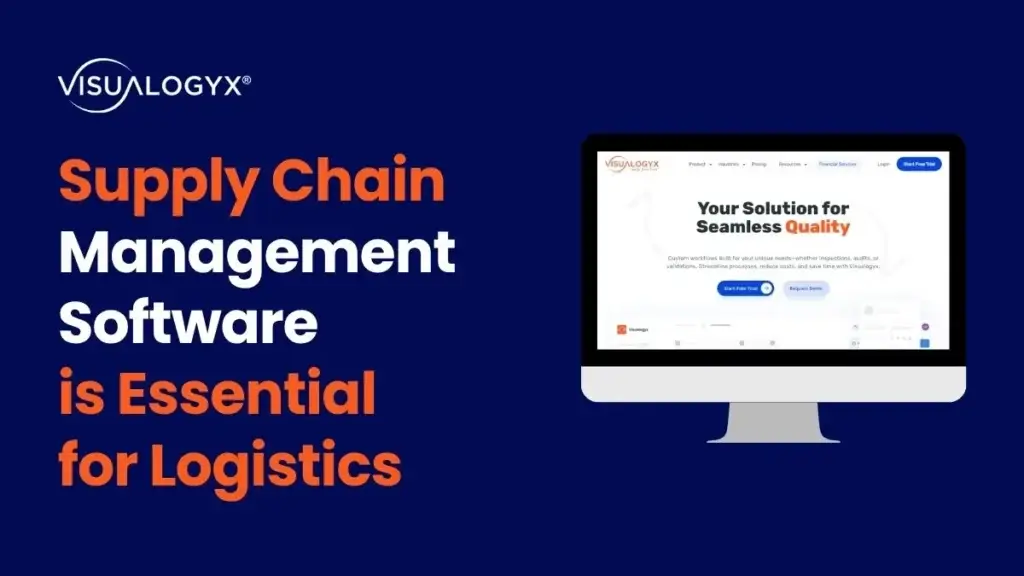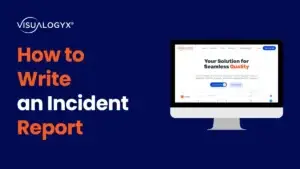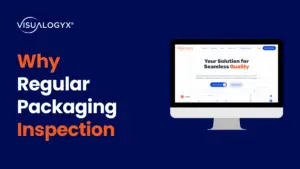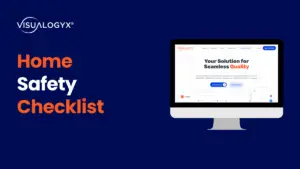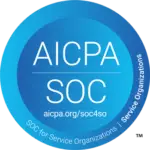Introduction
A Layered Process Audit (LPA) is a systematic approach to quality management that involves conducting regular audits at various levels or layers within an organization’s processes. LPAs ensure that processes are consistently followed and that quality standards are maintained throughout the organization.
Process audits are a cornerstone of effective quality management, providing organizations with a systematic mechanism to ensure that their operational processes align with established standards and regulations. By conducting regular audits, companies can identify and rectify deviations from prescribed procedures, reducing the likelihood of producing substandard products or delivering inadequate services. Moreover, the emphasis on compliance not only safeguards against legal and regulatory issues but also fosters a culture of discipline and adherence to quality standards throughout the organization.
Why Layered Process Audits?
Layered Process Audits (LPAs) represent a systematic approach to quality management, designed to ensure consistency and adherence to established processes within an organization. LPAs involve the regular and structured examination of various operational layers, typically starting on the shop floor and extending through management levels. This systematic layering allows for a comprehensive assessment of processes, ensuring that quality standards are maintained at every level.
The key components of LPAs include the use of standardized checklists tailored to specific processes, frequent and regular audits, and immediate feedback mechanisms. These audits aim to identify deviations, non-conformities, and potential areas for improvement promptly. LPAs emphasize a proactive stance, encouraging organizations to address issues in real time, thereby preventing the escalation of problems and contributing to a culture of continuous improvement. By involving personnel at different levels and providing a holistic view of processes, LPAs offer a strategic and efficient means of upholding quality standards and enhancing overall operational performance.
Key Components of Audit Layers
Layered Process Audits (LPAs) involve a multi-tiered approach to quality management, with audits conducted at various organizational layers. This begins at the operational level, encompassing shop floor processes, and extends upward through different management levels. This tiered structure allows for a thorough examination of processes across the entire organizational hierarchy, ensuring a comprehensive assessment.
Roles and Responsibilities of Each Layer
Operational Level: This layer involves frontline employees and focuses on the day-to-day execution of processes. Responsibilities include adherence to standardized procedures, quality checks, and immediate reporting of deviations.
Supervisory/Team Leader Level: This layer oversees the operational processes, ensuring that the established standards are being followed. Responsibilities include addressing immediate issues, providing guidance to frontline personnel, and reporting upward to higher management.
Management Level: At this layer, the focus is on broader process oversight. Responsibilities include reviewing aggregated audit data, identifying systemic issues, implementing corrective actions, and communicating with executive leadership.
Relationship Between Layers in Ensuring Comprehensive Auditing
The interconnected layers in LPAs form a cohesive system that ensures a thorough and holistic audit process. Frontline employees are the eyes and ears of daily operations, providing real-time data. Supervisory levels act as immediate responders, addressing issues promptly. Management levels analyze aggregated data, enabling strategic decision-making for continuous improvement. This interdependence fosters a culture of accountability, where each layer plays a vital role in maintaining and enhancing the overall quality of processes. The relationships between these layers create a dynamic feedback loop, facilitating efficient communication and a proactive approach to quality management across the organization.
Inspections aren’t Enough!
Inspections, while valuable for identifying defects and non-conformities, have limitations in ensuring sustained process excellence and preventing recurrent issues. Layered Process Audits (LPAs) offer a more comprehensive and proactive solution to address these shortcomings.
1. Limited Frequency and Scope:
Inspections are typically periodic and may not cover all aspects of a process. They might catch defects during specific checkpoints but may miss variations in day-to-day operations. LPAs, on the other hand, involve continuous, regular assessments at various levels of the organization, providing a more thorough examination of processes.
2. Reactive Nature of Inspections:
Inspections often operate on a reactive basis, identifying issues after they have occurred. LPAs, in contrast, are designed to be proactive. They focus on preventing issues by regularly evaluating critical processes, uncovering potential deviations, and implementing corrective actions before defects become widespread.
3. Inability to Address Root Causes:
While inspections pinpoint defects, they may not delve deep enough to uncover the root causes. LPAs are structured to not only identify non-conformities but also to understand why deviations occur. This allows organizations to implement corrective actions that address the underlying issues, leading to more sustainable improvements.
4. Lack of Engagement and Ownership:
Inspections are often centralized efforts conducted by a specific team, leading to a lack of widespread engagement among employees. LPAs involve auditors from different levels and departments, fostering a sense of ownership and accountability throughout the organization. This engagement is crucial for long-term success in maintaining process standards.
5. Failure to Capture Process Variability:
Processes in complex environments can exhibit variations even when the end product meets specifications during inspections. LPAs recognize and address these variations by regularly assessing the consistency and adherence to approved processes, ensuring that standardization is maintained over time.
6. Missed Opportunities for Continuous Improvement:
Inspections may focus primarily on compliance and conformity, missing the opportunity for continuous improvement. LPAs, with their systematic and regular approach, not only identify areas of non-compliance but also provide valuable data for analyzing trends, driving proactive improvements, and achieving higher overall process efficiency.
These issues can be tackled by using layered process audit software. Manufacturing inspection software can come in handy in conducting layered process audits.
Layered Process Audit Framework
A Layered Process Audit (LPA) program framework is essential for organizations aiming to systematically implement and sustain an effective LPA initiative. Here’s a basic framework to guide the establishment and execution of an LPA program:
1. Define Objectives and Scope:
Clearly articulate the objectives of the LPA program. Determine the scope by identifying critical processes, high-risk areas, or those with a significant impact on product quality. Align the objectives with overall business goals.
2. Assemble Cross-Functional Teams:
Form cross-functional audit teams that include individuals from various levels of the organization, including management, supervisors, and frontline workers. This diversity ensures a comprehensive perspective and fosters a sense of collective responsibility for quality.
3. Develop Audit Checklists:
Create simple and clear audit checklists for each identified process. These layered process audit templates should focus on key elements critical to process success and should not require specialized knowledge to conduct. Ensure that audits cover both product and process characteristics.
4. Training and Orientation:
Provide training to auditors on the purpose of LPAs, the audit process, and the use of checklists. Ensure that auditors understand their role in continuous improvement and quality assurance. Orientation sessions can help everyone align with the program’s goals.
5. Conduct Audits:
Implement the LPA program by conducting regular audits as per the defined schedule. Auditors should follow the checklists, observe processes, and engage with employees to gather insights. Document findings accurately and comprehensively.
6. Reporting and Documentation:
Establish a systematic reporting system to document audit results. Use standardized formats for reporting non-conformities, deviations, and areas of improvement. Ensure clarity in reporting and make the information easily accessible for analysis.
How does a Layered Process Audit Help your Business?
1. Ensuring Process Integrity
LPAs kick off by meticulously verifying the proper establishment and consistent adherence to processes across each layer of our manufacturing system. This involves a detailed review of work instructions and procedures specific to each layer, ensuring a standardized approach.
2. Swift Corrective Action Implementation
If any non-conformities or deviations surface during the audit process, LPAs ensure prompt implementation of corrective actions. Addressing issues at their root cause prevents their recurrence in future processes, contributing to a seamless and efficient operational flow.
3. Comprehensive Record-Keeping for Progress
LPAs prioritize comprehensive record-keeping, documenting all changes made to the system. This includes corrective actions taken, updates to work instructions, and any modifications to procedures. This historical reference serves as a valuable tool for tracking improvements over time and maintaining transparency.
4. Holistic Evaluation and Ongoing Improvement
LPAs go beyond paperwork, involving interviews, hands-on observation of processes, and verification of records. This holistic approach ensures not only compliance with regulations and industry standards but also assesses the effectiveness of communication and training. Using data collected during audits, LPAs drive continuous improvement through periodic adjustments to audit checklists, fostering an adaptive organizational culture aligned with evolving business needs.
Layered Process Audit Checklist
Creating a Layered Process Audit (LPA) checklist involves tailoring questions to specific processes within each layer of your organization. While the checklist will vary based on your industry and unique processes, here’s a generic template to get you started. Adapt and expand it to suit your organization’s needs:
Process Verification and Adherence
- Ensure clarity and accessibility of work instructions.
- Confirm consistent process adherence through employee training and regular assessments.
Corrective Action Implementation
- Identify and promptly implement corrective actions for non-conformities.
- Establish a communication and training mechanism for corrective measures.
Continuous Improvement through Audits
- Utilize audit data to identify trends and areas for improvement.
- Regularly review and adjust the audit process to foster ongoing organizational enhancement.
What Have We Learnt?
- Implementing Layered Process Audits (LPAs) is not merely a choice but a strategic imperative for businesses aiming to achieve and sustain excellence.
- By systematically verifying processes, swiftly implementing corrective actions, and fostering continuous improvement, LPAs lay the foundation for a robust quality management system.
- Starting with LPAs ensures that organizations proactively address potential issues at their root cause, prevent recurrence, and cultivate a culture of ongoing improvement.
This not only enhances product and process quality but also contributes to operational efficiency, regulatory compliance, and customer satisfaction. In today’s dynamic business landscape, where adaptability and precision are paramount, embracing LPAs is a pivotal step toward building resilience and ensuring long-term success.
FAQs
What are the three layers of audit?
The three layers of audit in the context of Layered Process Audits (LPAs) typically refer to different organizational levels involved in the audit process. These layers often include frontline workers, supervisors or team leaders, and management. Each layer brings a unique perspective to ensure a comprehensive examination of processes.
What is the LPA checklist?
An LPA checklist is a structured set of questions and criteria used during Layered Process Audits. It guides auditors through the assessment of specific processes within an organization. The checklist covers aspects such as process adherence, corrective actions, record-keeping, and compliance with standards. It serves as a tool to systematically evaluate and improve the effectiveness of processes.
What is a layered process audit in QMS?
A layered process audit in Quality Management Systems (QMS) involves a systematic examination of a specific process to ensure it aligns with established standards, procedures, and regulatory requirements. The goal is to verify the effectiveness of the process, identify areas for improvement, and ensure compliance with quality management principles. Process audits in QMS contribute to enhancing overall organizational quality and performance.
